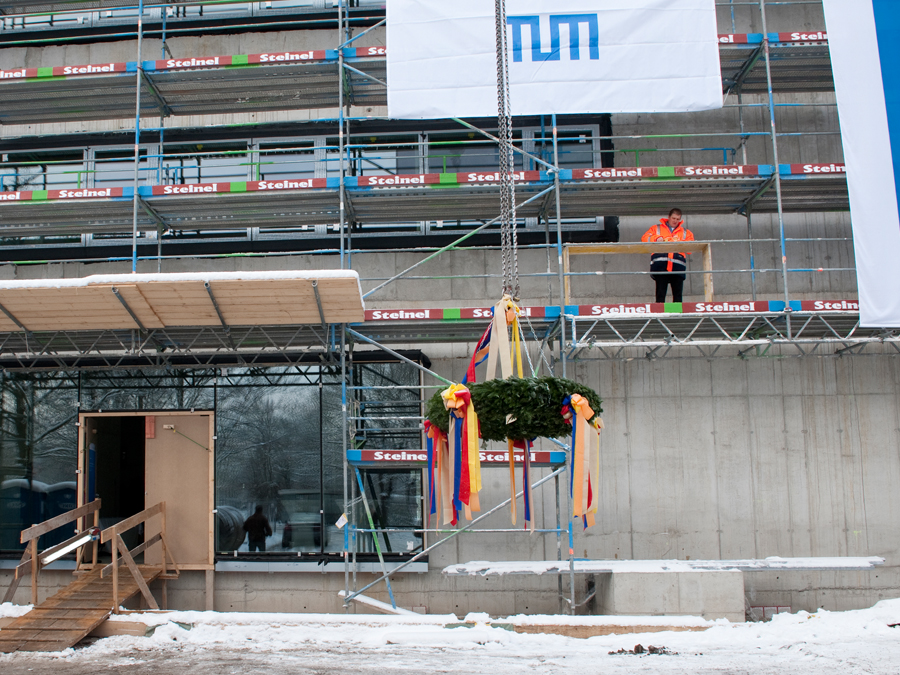Energy research in the age of digitalization:
Topping-out ceremony for TUM’s Research Center for Energy and Information

The new research building is a key measure of the Bavarian government’s scientific support for energy transition policy. To this end, among other actions, TUM created the Chair for Renewable and Sustainable Energy Systems, appointing Professor Thomas Hamacher, who also leads the MSE, to the position. As an integrated research center invested, on par with the departments, with the right to award doctorates, the MSE embodies TUM’s cross-disciplinary approach. "Here the classical disciplines of engineering and natural sciences, with their diverse research cultures, meet together under one roof and mutually enrich each other," explains TUM President Wolfgang A. Herrmann. "From the immediate proximity of the MSE to the Chemistry, Physics, Mathematics, Informatics, and Mechanical Engineering Departments – as well as the research neutron source Heinz Maier-Leibnitz (FRM II) and, in future, the TUM Department of Electrical and Computer Engineering – we expect synergy effects that will contribute decisively to our international competitiveness."
The building itself has been designed to reflect the latest advances in energy efficiency. Photovoltaic systems on the roof will not only provide electrical energy but also support experimental programs, as they are fitted with special components custom-developed at the university. Scientists will have access to a smart grid simulation hall and to labs for research into organic photovoltaics and batteries. Water from an on-campus spring will be used for ground load cooling, resulting in CO2 savings of up to 210 tons per year for this building alone. Heat recovery technology in the ventilation systems will reduce CO2 emissions by a further 115 tons. This will make the Research Center for Energy and Information TUM’s most energy-efficient building.
Beyond its role in research, the building, scheduled for completion by the start of 2017, will also provide a communication forum for dialogue between the research community and the public. A forum hall seating 200 people, an open atrium, and adjoining seminar rooms will be available for this purpose. Once the building is complete, the university will hold forward-looking forum events that will engage and inform the public on issues relating to the transition to renewable energy. The Munich Center for Technology in Society (MCTS) and the new Hochschule für Politik München (HfP) at TUM – the Bavarian School of Public Policy – will be involved in these events.
"This concept reflects our comprehensive engagement with the energy transition as one of the central societal and scientific challenges of the future," President Herrmann said at the topping-out ceremony in Garching.
More information: